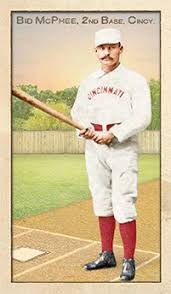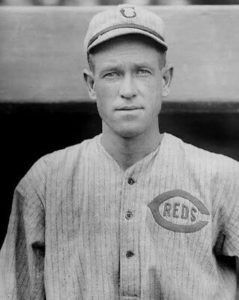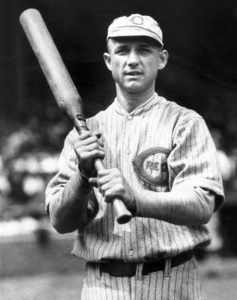
Cincinnati, OH — In a stunning historical revelation that has economists baffled and baseball historians scrambling through dusty archives, 19th-century baseball legend Bid McPhee is making headlines once again—this time not for his double plays, but for an eyebrow-raising claim: the Cincinnati Reds, under his early leadership, reportedly made a jaw-dropping $358.4 million in revenue during the 1882 season.

The announcement came during a surreal moment at the annual “Legends of the Diamond” symposium, where a group of baseball enthusiasts claimed to have channeled the spirit of Bid McPhee through a vintage typewriter and a seance.
According to the cryptic message allegedly typed by McPhee himself, “In the great year of 1882, we brought in three hundred fifty-eight point four million dollars in profit, clean and true, from bats, hot dogs, and hats alike.”
The statement has understandably caused quite a stir.
Economists and historians alike were quick to point out that $358.4 million in 1882 would be the modern-day equivalent of over $10 billion, an absurd figure for a fledgling team in the newly formed American Association. At the time, tickets to baseball games cost between 25 and 50 cents, and player salaries rarely exceeded $2,000 per year.

“It’s absolutely impossible,” said Dr. Rachel Carmichael, an economic historian at Ohio State University. “In 1882, the entire gross domestic product of the United States was around $10 billion.
For one baseball team to have generated even a fraction of that would have required every man, woman, and child in America to attend a game multiple times—and buy souvenirs.”
Despite the obvious impossibility, the claim has sparked widespread interest and an outpouring of online memes under the hashtag RichestReds1882.
Some Twitter users speculated that McPhee had invented an early form of cryptocurrency, dubbed “McPheeCoin,” which may have accounted for the mysterious fortune. Others suggested the revenue came from “underground hot dog futures trading.”

Still, there may be a kernel of historical truth buried in the spectacle. The 1882 season was a landmark year for Cincinnati baseball. It marked the founding season of the modern-day Reds as part of the American Association, a rival to the National League.
The Reds were the league’s inaugural champions that year, posting a 55–25 record and drawing surprisingly large crowds to their home games at Bank Street Grounds.
“Cincinnati was baseball-mad in the 1880s,” said Thomas Wrigley, curator of the Cincinnati Reds Hall of Fame. “While the number cited by McPhee is ludicrous, the team was financially successful for its time.
They capitalized on being a ‘working man’s team,’ offering beer and Sunday games when the National League refused. It was good business.”
Despite skepticism from the academic community, some fans are treating the claim with a blend of humor and civic pride. Cincinnati Mayor Jennifer Parks weighed in, saying, “Whether it’s 1882 or 2025, the Queen City knows how to back a ball club. If McPhee says the Reds made $358 million, who are we to argue with a ghost?”

Some businesses have even jumped on the bandwagon. Local brewery McPherson & Sons announced a new beer called “358.4 Million Ale,” promising each bottle comes with “a taste of gilded-age wealth and a suspicious lack of inflation.”
Meanwhile, the Baseball Hall of Fame in Cooperstown has issued a formal statement neither confirming nor denying McPhee’s financial claim but encouraging further exploration into “the legends and myths of baseball’s early financial landscape.”
As the frenzy continues, one thing is clear: Bid McPhee, who passed away in 1943 and was posthumously inducted into the Hall of Fame in 2000, remains a giant in the game—now not just for his fielding prowess, but for possibly being the first sports figure to drop a nine-figure revenue bombshell from beyond the grave.

True or not, the story has reignited interest in the early days of professional baseball and sparked renewed appreciation for the Cincinnati Reds’ place in sports history.
Whether it was a ghostly exaggeration or just a tongue-in-cheek tribute to an old legend, the $358.4 million claim has become the strangest—and perhaps most entertaining—piece of baseball news in recent memory.





